Africa is home to an extensive and diverse medicinal plant life, with its rich natural resources giving rise to an array of herbal medicines that have been used for centuries to treat various ailments. These traditional remedies draw on indigenous knowledge, passed down through generations. Some commonly used herbs in African medicine include Rooibos (Aspalathus linearis), Devil's claw (Harpagophytum procumbens), Buchu (Agathosma betulina), Cape Aloe (Aloe ferox), and Hoodia (Hoodia gordonii). Each of these plants has unique medicinal properties and plays an important role in the health practices of many African communities, offering treatments for everything from inflammation to digestive issues.
Rooibos, for example, is well-known beyond the African continent as a soothing herbal tea with antioxidant properties. It is caffeine-free, making it a popular alternative for those seeking a calming drink, while its high flavonoid content helps reduce inflammation. Devil's claw, another widely known African herb, is commonly used to relieve pain, especially in treating arthritis and back pain. Research has demonstrated its anti-inflammatory and analgesic effects, which have led to its use in both traditional African medicine and modern Western treatments.
African herbs are not only used locally but are also widely studied and exported to the West. Pelargonium sidoides, also known as African Geranium or Umckaloabo, is one of these herbs. It is traditionally used to treat respiratory infections and is now a popular remedy in Europe for colds and bronchitis. Similarly, Madagascar Periwinkle (Catharanthus roseus) is famous for its alkaloids, which are used in cancer treatments, particularly in chemotherapy drugs for leukemia and Hodgkin's disease. Acacia species, valued for their antimicrobial and anti-inflammatory properties, are also frequently exported.
In ancient Egypt, herbs played a major role in medicine, as evidenced by the Ebers Papyrus, one of the oldest known medical texts dating back to around 1550 BC. The document mentions a variety of plant medicines used by the Egyptians, including opium, cannabis, myrrh, and frankincense. These plants were not only used for their physical healing properties but also held spiritual significance. Frankincense and myrrh, for instance, were commonly used in religious rituals, but they were also applied in treating wounds and infections due to their antiseptic properties.
Other plants mentioned in the Ebers Papyrus include fennel, cassia, senna, thyme, henna, and juniper, many of which are still in use today. For example, fennel was used to treat digestive problems, while senna, a natural laxative, was employed for cleansing the bowels. Aloe, another common plant in African traditional medicine, was valued for its ability to heal burns and wounds, much like Cape Aloe in Southern Africa today. Castor oil, derived from the seeds of the castor plant, was another essential medicinal resource in Egypt, known for its use as a laxative and for promoting hair growth.
The medicinal knowledge of African herbs, both ancient and modern, has had a profound influence on global health practices. Today, many African herbs are incorporated into Western medicine, either as herbal supplements or as the basis for pharmaceutical drugs. As scientific studies continue to validate the benefits of these traditional remedies, the global interest in African herbal medicine is likely to grow, highlighting the importance of preserving this rich cultural heritage for future generations.
Powered by Zazzle Affiliate Helper


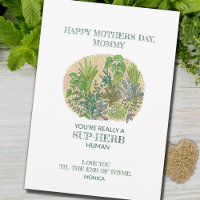 Sup-herb Pun Herb Mother’s Day Card
Sup-herb Pun Herb Mother’s Day Card Personalized Meal Planner Grocery List Fresh Herbs Notepad
Personalized Meal Planner Grocery List Fresh Herbs Notepad Watercolor Herb Wood Recipe Cookbook Family Name Notebook
Watercolor Herb Wood Recipe Cookbook Family Name Notebook Watercolor Herb Wood Recipe Cookbook Family Name 3 Ring Binder
Watercolor Herb Wood Recipe Cookbook Family Name 3 Ring Binder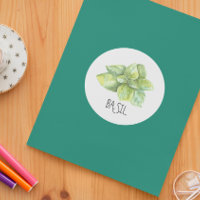 Watercolor Herb Basil Classic Round Sticker
Watercolor Herb Basil Classic Round Sticker Herb Leaf - Personalized Family Recipe Cookbook 3 Ring Binder
Herb Leaf - Personalized Family Recipe Cookbook 3 Ring Binder Herb Leaf - Personalized Family Recipe Cookbook 3 Ring Binder
Herb Leaf - Personalized Family Recipe Cookbook 3 Ring Binder Watercolor Recipe Herbs Greenery Personalized Cook Notebook
Watercolor Recipe Herbs Greenery Personalized Cook Notebook Recipe rustic cooking food vegitarian monogram 3 ring binder
Recipe rustic cooking food vegitarian monogram 3 ring binder Green Margarita Cocktail Bridal Shower Welcome Foam Board
Green Margarita Cocktail Bridal Shower Welcome Foam Board Floral Herbs Handmade Crafts Flower Drawing Business Card
Floral Herbs Handmade Crafts Flower Drawing Business Card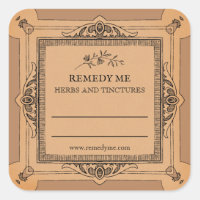 Blank Medicinal Herb Remedy Tincture Labels
Blank Medicinal Herb Remedy Tincture Labels Modern Gourmet Herbs & Spices Recipe Cookbook 3 Ring Binder
Modern Gourmet Herbs & Spices Recipe Cookbook 3 Ring Binder Marble Design Spoon Spices Food Chef Catering Business Card
Marble Design Spoon Spices Food Chef Catering Business Card Modern Waterproof Kitchen Spice Jar Label
Modern Waterproof Kitchen Spice Jar Label Blank Crystal Herb Spell Supply Business Labels
Blank Crystal Herb Spell Supply Business Labels Modern Simple Waterproof Kitchen Spice Jar Label
Modern Simple Waterproof Kitchen Spice Jar Label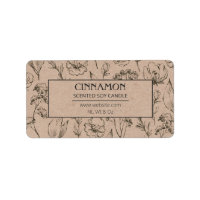 Country Kraft Wildflower And Herb Candle Labels
Country Kraft Wildflower And Herb Candle Labels A Little Wildflower Is On Her Way Cute Baby Shower Invitation
A Little Wildflower Is On Her Way Cute Baby Shower Invitation Teal Orange Green Watercolor Cocktail Pool Party Invitation
Teal Orange Green Watercolor Cocktail Pool Party Invitation Farmer's market | off the market Bridal Shower Invitation
Farmer's market | off the market Bridal Shower Invitation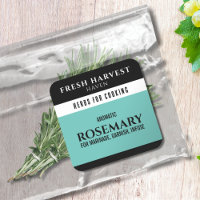 Minimalist Cyan Herb Square Sticker
Minimalist Cyan Herb Square Sticker Chic Green Margarita Cocktail Cocktail Pool Party Invitation
Chic Green Margarita Cocktail Cocktail Pool Party Invitation Elegant Greenery Happily Ever After Retractable Banner
Elegant Greenery Happily Ever After Retractable Banner Teal Orange Summer Soiree Cocktail Pool Party Invitation
Teal Orange Summer Soiree Cocktail Pool Party Invitation Watercolor Lavender Wedding Invitation
Watercolor Lavender Wedding Invitation Ivory Orange Green Watercolor Cocktail Pool Party Invitation
Ivory Orange Green Watercolor Cocktail Pool Party Invitation Elegant Greenery Welcome to The Night Before Sign
Elegant Greenery Welcome to The Night Before Sign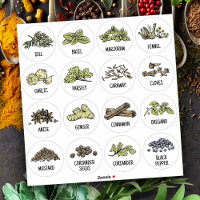 Modern cooking kitchen culinary herbs home jar hom sticker
Modern cooking kitchen culinary herbs home jar hom sticker Gold Leaves Greenery Elegant Engagement Party Invitation
Gold Leaves Greenery Elegant Engagement Party Invitation Blush Pink Orange Watercolor Cocktail Pool Party Invitation
Blush Pink Orange Watercolor Cocktail Pool Party Invitation Formal Minimal Dusty Blue Wedding Place Card
Formal Minimal Dusty Blue Wedding Place Card Rustic Gourmet Herbs & Spices Recipe Cookbook 3 Ring Binder
Rustic Gourmet Herbs & Spices Recipe Cookbook 3 Ring Binder Rustic cookbook family dinner recipes 3 ring binder
Rustic cookbook family dinner recipes 3 ring binder Modern Elegant Waterproof Kitchen Spice Jar Label
Modern Elegant Waterproof Kitchen Spice Jar Label Bridal Shower Tuscan Botanical Lemons Herbs Invitation
Bridal Shower Tuscan Botanical Lemons Herbs Invitation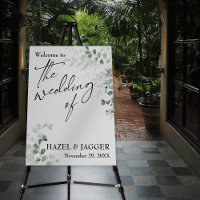 Elegant Greenery Welcome to The Wedding of Sign
Elegant Greenery Welcome to The Wedding of Sign Cheers to Love Wine Glasses Floral Wedding Welcome Foam Board
Cheers to Love Wine Glasses Floral Wedding Welcome Foam Board Herbs and Spices in Vietnamese Cooking Postcard
Herbs and Spices in Vietnamese Cooking Postcard Elegant Greenery Welcome to The Morning After Foam Board
Elegant Greenery Welcome to The Morning After Foam Board Natural Kraft Floral Rose Petals Iris Roses Pink Wrapping Paper
Natural Kraft Floral Rose Petals Iris Roses Pink Wrapping Paper Elegant Green Margarita Cocktail Bridal Shower Wine Label
Elegant Green Margarita Cocktail Bridal Shower Wine Label Margarita Cocktail Summer Soiree Cocktail Party Invitation
Margarita Cocktail Summer Soiree Cocktail Party Invitation Monogram rustic vegitarian cooking food recipes mini binder
Monogram rustic vegitarian cooking food recipes mini binder Herbs and Spices Ceramic Tile
Herbs and Spices Ceramic Tile Teal Orange Green Cocktail Bridal Shower Welcome Foam Board
Teal Orange Green Cocktail Bridal Shower Welcome Foam Board Formal Minimal Dusty Blue Front and Back Wedding Invitation
Formal Minimal Dusty Blue Front and Back Wedding Invitation Elegant Greenery & Script The Night Before Invitation
Elegant Greenery & Script The Night Before Invitation Elegant Green Margarita Cocktail Bridal Shower Invitation
Elegant Green Margarita Cocktail Bridal Shower Invitation Recipe Divider Page - Green Herb Binder Insert
Recipe Divider Page - Green Herb Binder Insert Natural Floral Grass Green Rosemary Herbs Petals Wrapping Paper
Natural Floral Grass Green Rosemary Herbs Petals Wrapping Paper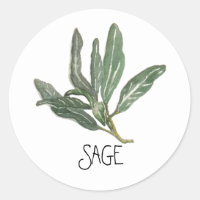 Watercolor Herb Sage Classic Round Sticker
Watercolor Herb Sage Classic Round Sticker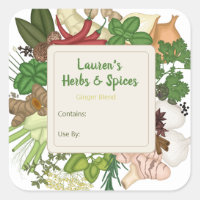 Customizable Herbs & Spices Food Labels
Customizable Herbs & Spices Food Labels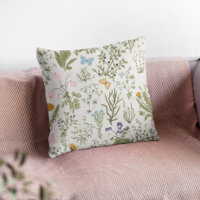 Summer Floral Wildflowers Throw Pillow
Summer Floral Wildflowers Throw Pillow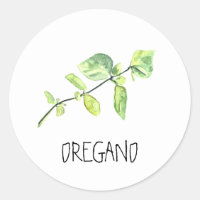 Watercolor Herb Oregano Classic Round Sticker
Watercolor Herb Oregano Classic Round Sticker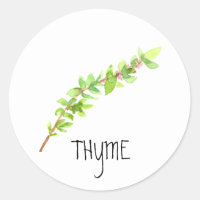 Watercolor Herb Thyme Classic Round Sticker
Watercolor Herb Thyme Classic Round Sticker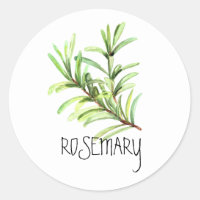 Watercolor Herb Rosemary Classic Round Sticker
Watercolor Herb Rosemary Classic Round Sticker Kitchen Herbs and Spices Recipe Binders
Kitchen Herbs and Spices Recipe Binders
No comments:
Post a Comment